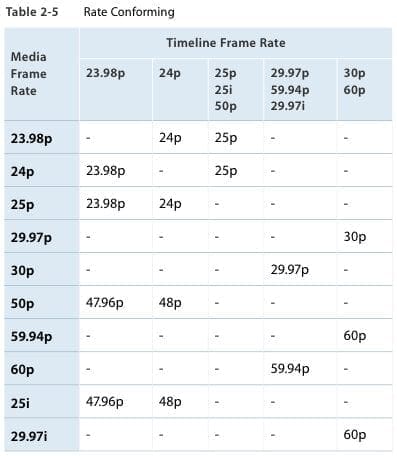So you’re here because you’re doing a project and you can’t decide if you should shoot 30fps or 60, or maybe you haven’t started but you’re a fan on planning ahead, or you’ve finished your project and are editing and have realized that you screwed up. In any case, I’m here to teach you when the right time to use either frame rate is. By the end of this article, you’ll surely want to join our Crew List as a Director of Photography!
What is fps?
If you already know what fps is you can skip this whole section. If you don’t then here it is: Frames Per Second. Every movie you watch is simply a bunch of individual frames (usually 24 (well 23.976 if you want to get technical)) being shown in sequence extremely fast within a given second of time. So, when you watch a movie every second of footage you see in reality is 24 individual frames moving in front of your eyes. This creates movement! It’s like when you draw a cartoon on every piece of paper in a pad of Post-it Notes and flip through it as fast as you can, but this looks way better and is extremely expensive. Now, we as filmmakers are giving the option to divert from the normal 24fps to create a unique filmmaking experience. For example: if you shoot something at 48fps and run it down to 24fps for viewing purposes (unless you’re The Hobbit) that footage is now twice as long, or slow motion. It doesn’t stop their either! Some cameras can shoot thousands of frames per second which can stretch a single second of footage to minutes of viewing time. Hell, MIT has a camera that can shoot 5 trillion frames per second. Not that you’ll ever find that on a film set.
This video is only a meagre 1 trillion frames per second. Pfft.
30fps or 60fps?
There’s more to frame rate than meets the eye. Adjusting a frame rate changes your set immensely, whether it’s having to change more setting in your camera (like resolution or shutter) or having to add more lights to your shot (more fps = less time for the camera to collect light = darker frames). All in all, it’s not just a flick of a switch. Ultimately, deciding which frame rate to use will be up to you and your creative mind set for the particular project but here are some facts to help you on your way.

Cinematic-ness
When it’s said and done, 24fps is the cinematic standard. It’s just what our eyes are used to because that’s what we’ve been watching movies at for decades and this won’t change for a very long time, if ever. If you want your project to have the most “cinematic feel” as possible between 30fps and 60fps, pick 30fps.
Smoother Motion
If what you’re shooting is action packed with tons of motion and pieces involved and you don’t care about the cinematic feel, pick 60fps. This allows the camera to capture twice the frames thus the transition between each frame is less of a jump which makes your footage look much smoother.
Distribution
Worried about whether or not YouTube or Vimeo will accept your project because of the frame rate? Don’t! They accept most frame rates so you’ll be fine. However, if you’re worried about a festival or some other distribution source you should check with them first. In most cases you’ll be fine because it’s a creative choice and most places won’t discredit you for that but it’s better to be safe than sorry! Especially when your project is on the line.
File Size
For the most part you won’t notice any change in file size, and if there is one, it’ll be very little. Don’t worry about file size when it comes to deciding frame rate. However, if you’re using a film camera, you will have twice as much film to deal with!
Slow Motion
Looking to do a slow motion shot? Then 60fps is much better to use than 30fps. 30fps will hardly change anything if you’re slowing it down to 24fps and obviously not at all if it remains at 30fps.
Resolution
Most modern cameras will be able to shoot at least 1080p at 60 frames but in general, the more frames you’re shooting the more advanced the camera has to be to shoot at it’s best resolution. Keep that in mind if having a high frame rate is something that’s essential in your camera. You don’t want to have any loss in quality!
Conclusion
If there’s no specific reason to shoot at 60fps I’d recommend just sticking with 30fps, it’s the safest bet.
If you want to expand your filmmaking knowledge, I’d suggest you take a look at this class from Spike Lee or these film production courses. Both have excellent courses for all skill levels!
I hope this was able to give you some insight into when you should use either frame rate. Have you ever created any unique footage from a frame rate other than 24? Share it in the comments below!

2 thoughts on “30fps vs. 60fps”
all articles do not emphasize the importance of the bitrate of a single frame, which is often much lower in the case of 60fps. And this is also a question of image quality.
Although nothing new here to me, your article was well written for newbies to understand fps thank you for sharing.